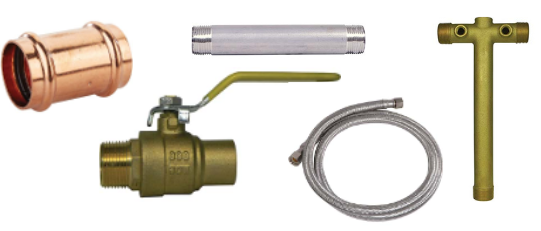Plumbing Through the Ages

Plumbing Through the Ages
Plumbing is a cornerstone of modern civilization, providing us with the means to deliver clean water and dispose of waste efficiently. But how did we arrive at the sophisticated plumbing systems we have today? Let's take a journey through time to explore the history of plumbing, from ancient innovations to contemporary advancements:
Ancient Civilizations: The Birth of Plumbing
Mesopotamia and Ancient Egypt
- The earliest evidence of plumbing can be traced back to ancient Mesopotamia and Egypt around 4000-3000 BCE. The Mesopotamians developed primitive clay pipes to transport water and remove waste. In Egypt, intricate copper piping systems were discovered in the ruins of pyramids, showcasing their advanced understanding of water management.
- Indus Valley Civilization
- The Indus Valley Civilization, flourishing around 2500 BCE, featured one of the most sophisticated early plumbing systems. Cities like Mohenjo-Daro and Harappa created public baths, advanced drainage systems, and private toilets connected to a centralized sewage system. These innovations highlight their emphasis on hygiene and urban planning.
The Roman Empire: Engineering Marvels
Aqueducts and Public Baths
- The Roman Empire, between 500 BCE and 500 CE, is known for its engineering know-how, particularly in plumbing. Romans constructed extensive aqueducts to supply water to cities, public baths, fountains, and private homes. Aqueducts were built with stone, brick, and a special waterproof cement.
- Lead Pipes and Baths
- Romans also utilized lead pipes to distribute water within cities. While effective, this practice eventually led to lead poisoning. Public baths were central to Roman social life, demonstrating the importance of water management in their daily lives.
The Middle Ages: A Period of Decline
- Sanitation Challenges
- After the fall of the Roman Empire, Europe experienced a decline in public sanitation and plumbing systems. The Middle Ages (500-1500 CE) included limited advancements in plumbing, with waste often being disposed of in streets or undeveloped cesspits. This period was marked by poor hygiene and frequent outbreaks of diseases like the Black Death.
The Renaissance and Beyond: Rebirth of Plumbing
Innovations and Improvements
- The Renaissance (14th-17th centuries) sparked a renewed interest in science and engineering, leading to advancements in plumbing. Sir John Harington, an English courtier, invented the first flushing toilet in 1596. However, it wasn't until the 19th century that plumbing systems began to resemble modern designs.
- The Industrial Revolution
- The Industrial Revolution (18th-19th centuries) revolutionized plumbing with the mass production of iron and steel pipes. Indoor plumbing became more common in urban areas, and innovations like the S-trap (invented by Alexander Cummings in 1775) prevented sewer gases from entering homes. Public health reforms and the development of municipal water systems further improved sanitation.
Modern Plumbing: A Technological Triumph
- 20th Century and Beyond
- The 20th century brought significant advancements in plumbing technology and infrastructure. Copper and plastic pipes replaced iron and lead, providing safer and more efficient water distribution. Water treatment plants and sewage systems became standard in developed countries, ensuring access to clean water and proper waste disposal.
Smart Plumbing
- In recent years, the advancement of smart technology has further transformed plumbing. Smart fixtures, leak detectors, and water-efficient appliances help conserve water and detect issues before they become major problems. Innovations like greywater recycling and rainwater harvesting contribute to sustainable water management.
From the clay pipes of ancient Mesopotamia to the smart plumbing systems of today, the history of plumbing is living proof of modernization over time and our quest for better living conditions. At A.Y. McDonald, we are proud to be part of this industry, providing products and solutions that continue to advance the plumbing system. As we innovate and improve, we look forward to shaping the future of plumbing with the same commitment to quality and service that has defined us for over a century!

Sources:
- https://www.bigrentz.com/blog/very-not-boring-history-plumbing
- https://en.wikipedia.org/wiki/History_of_water_supply_and_sanitation#:~:text=The%20Mesopotamians%20introduced%20clay%20sewer,constructed%20latrines%2C%20from%203200%20BCE
- https://en.wikipedia.org/wiki/Plumbing
- https://www.safeplumbing.org/about-pmi/timeline
